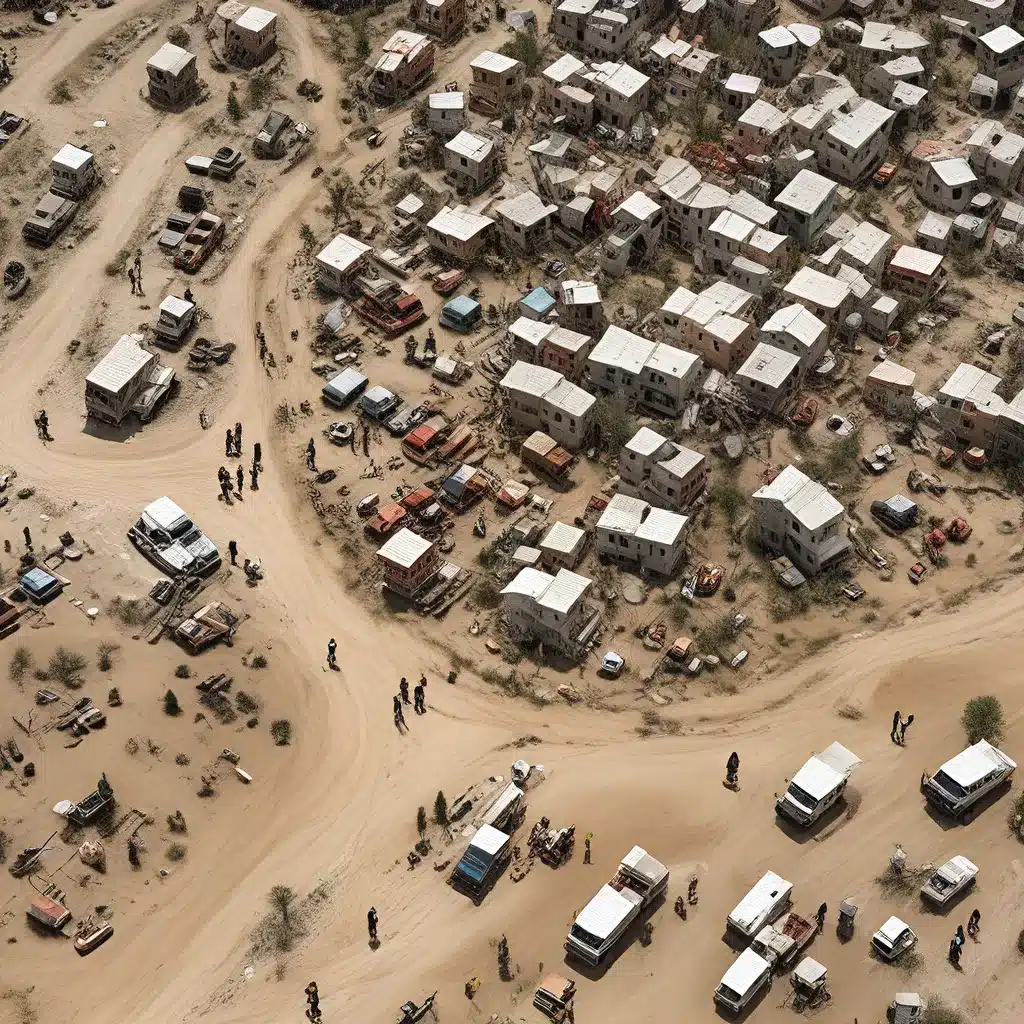
Navigating the Complexities of Sensor Networks in Emergency Situations
In the face of natural disasters, the ability to rapidly deploy and coordinate sensor networks can be a game-changer in disaster response and recovery efforts. Sensor networks have become increasingly vital in gathering real-time data, monitoring critical infrastructure, and enabling efficient communication during times of crisis. As the Internet of Things (IoT) continues to evolve, the potential for these technologies to revolutionize disaster management is becoming more apparent.
Recent research has highlighted the importance of distributed algorithms in enabling cooperative sensing among sensor nodes. These algorithms facilitate the seamless exchange of information and coordinated decision-making, which is essential for effective disaster response. By leveraging the collective intelligence of a network of sensors, emergency responders can gain a comprehensive understanding of the situation, identify critical needs, and allocate resources more efficiently.
The Challenges of Sensor Network Design in Disaster Scenarios
Designing sensor networks for disaster response scenarios presents a unique set of challenges. These networks must be resilient, adaptable, and capable of autonomous operation in the face of rapidly changing environmental conditions and potential infrastructure failures.
One key challenge is ensuring the security and reliability of the sensor network, as these systems can be vulnerable to cyber threats, physical tampering, and disruptions caused by the disaster itself. Robust security protocols and decentralized network architectures are crucial to maintaining the integrity of the data and the overall system.
Another important consideration is energy management. Sensor nodes in disaster response scenarios often operate in remote or isolated areas, where access to reliable power sources may be limited. Deploying energy-efficient algorithms and leveraging renewable energy sources can help extend the operational lifetime of the sensor network, ensuring its continuous availability during critical periods.
Leveraging Distributed Algorithms for Cooperative Sensing
Distributed algorithms play a pivotal role in enabling cooperative sensing within sensor networks. These algorithms facilitate the coordination and collaboration of sensor nodes, allowing them to share data, make collective decisions, and adapt to changing conditions.
One such algorithm is the Consensus-based Distributed Algorithm (CDA). CDA enables sensor nodes to reach a consensus on the state of the environment, even in the presence of faulty or unreliable nodes. By iteratively exchanging information and updating their internal states, the sensor nodes can converge to a shared understanding, which is crucial for coordinated decision-making during disaster response.
Another algorithm, the Distributed Kalman Filter (DKF), leverages the collaborative capabilities of sensor networks to improve the accuracy and reliability of environmental monitoring. By fusing data from multiple sensor nodes, the DKF can provide a more comprehensive and precise representation of the disaster situation, enabling responders to make informed decisions.
Practical Applications of Sensor Networks in Disaster Response
The integration of sensor networks and distributed algorithms in disaster response scenarios has led to numerous practical applications that enhance emergency management efforts.
Structural Health Monitoring: Sensor networks can be deployed to continuously monitor the structural integrity of buildings, bridges, and other critical infrastructure during and after a disaster. By detecting and reporting potential failures or instabilities, emergency responders can prioritize rescue efforts and resource allocation.
Environmental Monitoring: Sensor networks can be used to track and analyze environmental data, such as air quality, water levels, and weather patterns, in real-time. This information can help identify hazardous conditions, predict the spread of contaminants, and guide evacuation strategies.
Disaster Communications: Sensor networks can serve as a reliable and resilient communication backbone when traditional communication systems are disrupted. By establishing ad-hoc mesh networks, sensor nodes can relay critical information and coordinate emergency response efforts, even in remote or isolated areas.
Search and Rescue Operations: Sensor networks can be deployed to assist in search and rescue operations, leveraging technologies such as thermal imaging and motion detection to locate and track individuals in need of assistance.
The Future of Sensor Networks in Disaster Response
As the field of sensor networks and IoT continues to evolve, the potential for these technologies to transform disaster response and management is becoming increasingly evident. Advancements in distributed algorithms, energy efficiency, and secure communication protocols are paving the way for more robust and reliable sensor networks that can be rapidly deployed and adapted to various disaster scenarios.
The integration of artificial intelligence and machine learning into sensor network systems can further enhance their capabilities, enabling predictive analytics, automated decision-making, and real-time adaptation to changing conditions. Additionally, the convergence of sensor networks with emerging technologies, such as unmanned aerial vehicles (UAVs) and edge computing, can unlock new possibilities for data collection, rapid response, and coordinated disaster management.
As we navigate the complexities of a rapidly changing world, the role of sensor networks in disaster response will only become more crucial. By leveraging the power of distributed algorithms and cooperative sensing, we can unlock the full potential of these technologies to save lives, protect critical infrastructure, and build more resilient communities in the face of natural and man-made disasters.
To explore more about sensor networks, IoT, and related technologies, visit sensor-networks.org.